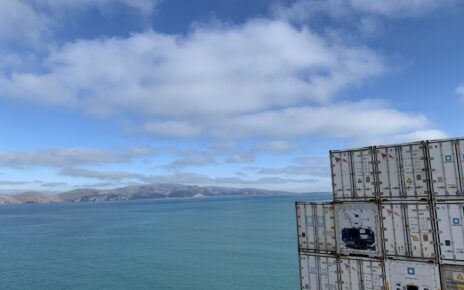How to Choose the Perfect Shipping Route for Your Business. When it comes to international trade, one of the most critical decisions your business will make is selecting the right shipping route. The choice of route can significantly impact your costs, transit times, and overall logistics efficiency. In this article, we’ll explore the key factors to consider when choosing a shipping route for your business.
Perfect Shipping Route for Your Business
1. Identify Your Cargo
The type of cargo you’re transporting plays a crucial role in route selection. Different routes may be better suited for specific types of goods. For example, certain routes may be more efficient for bulk commodities, while others are ideal for perishable goods or fragile cargo. Understanding your cargo’s unique requirements is the first step in choosing the right route.
2. Consider Transit Time
Transit time is a critical factor for many businesses. Faster transit times can help you meet customer demands and reduce holding costs. However, shorter routes may come at a premium price. Balancing transit time with cost-effectiveness is essential. If your cargo can tolerate longer transit times, you may opt for a more cost-efficient route.
3. Evaluate Cost Factors
Shipping costs are a significant concern for businesses. The cost of transportation can vary widely depending on the route, shipping method, and other factors. Consider the following cost-related factors:
– Distance: Longer routes generally cost more due to increased fuel and operational expenses.
– Tolls and Fees: Some routes may involve tolls, canal fees, or other charges that can impact your budget.
– Fuel Prices: Keep an eye on global fuel prices, as they can fluctuate and influence shipping costs.
– Insurance Costs: Certain routes may require higher insurance premiums due to increased risks.
4. Analyze Port Infrastructure
The ports along your chosen route are crucial for efficient cargo handling. Consider the infrastructure, capacity, and efficiency of the ports at both the origin and destination. Efficient ports can reduce cargo delays and costs.
5. Weather and Seasonal Considerations
Weather patterns can impact shipping routes significantly. Some routes may be susceptible to adverse weather conditions during certain seasons. Understanding these patterns and planning accordingly can help you avoid delays and potential damage to your cargo.
6. Security and Geopolitical Factors
Safety is paramount in international shipping. Research the security and geopolitical situation along your chosen route. Avoid routes with a history of piracy or political instability. Stay informed about any potential risks.
7. Environmental Impact
Consider the environmental impact of your chosen route. Some routes may be more eco-friendly due to shorter distances or the availability of vessels using cleaner fuels. This consideration aligns with sustainability goals and may also impact your public image.
8. Regulatory Compliance
Ensure that your chosen route complies with all international shipping regulations, including customs requirements, safety standards, and environmental regulations. Non-compliance can lead to delays and fines.
9. Service Providers
Evaluate the reliability and reputation of shipping companies and carriers operating on your chosen route. Their performance can directly impact your cargo’s safety and timely delivery.
10. Customer Requirements
Finally, take into account the preferences and requirements of your customers. If you have customers in specific regions or countries, consider routes that align with their needs and expectations.
In conclusion, choosing the right shipping route for your business is a multifaceted decision that requires careful consideration of cargo, cost, time, infrastructure, and security. Conduct thorough research, consult with logistics experts, and continually assess and adapt your routes to meet the evolving needs of your business and your customers. A well-chosen shipping route can be the foundation of a successful global trade strategy.



